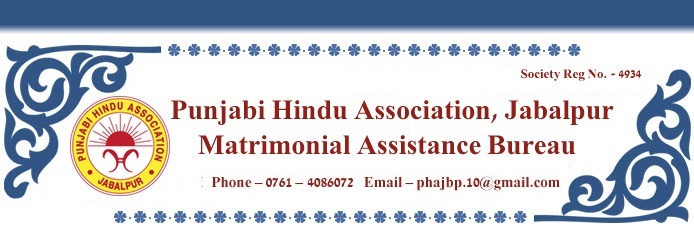
History
The word Punjab consists of the two words "Panj" and "Aab" where Panj means five and Aab means water. This name was given to this region to symbolize its five rivers.
The Northwest location of the state and its fertile land created a strong attraction for foreign influence. Persians, Arabs, the British, and Turko-Mongolians were a few of the groups which contributed to its development. Punjab also was a nurturing ground to several religious movements such as Buddism, Sikhism, and several schools of Islam.
The historical area of Punjab was defined to the east from the basin of the river Bias to the boundary of the river Indus to the west. On the north the state was bounded by the Kashmiri Himalayas and on the south it reached the plains of Rajasthan and Cholistan. However, over history Punjab has had its boundaries expand as well as shrink. The high time for Punjab occurred under the reign of Mugal emperor Babur and the empire of Maharaja Ranjit Singh. With the partition in 1947 the borders of the region shrank to its current size, with its division into the Pakistani province of Punjab and the Indian state of Punjab.
The land of 5-rivers, population-wise the largest, and once known as the granary of east, the Punjab is the lifeline of Pakistan. Muhammad Afzal Upal Major Events In Punjabi History:
Aryan Migrations (516 BC -- 321 AD)Persian Rule (516 BC -- 321 AD)Alexander's Invasion (321 AD)Muslim Invasions (713 AD -- 1300 AD)The Rise of Sikh Power (1700 AD -- 1849 AD) The word "Punjab" for the first time was mentioned in the Book ``Tarikh-e-Sher Shah'' (1580) which mentions the construction of Fort by a fellow named ``Sher Khan of Punjab''. Again the name is mentioned in ``Ain-e-Akbari'' part 1 written by Abul Fazal who also mentions that the territory of Punjab was divided into two provinces of Lahore and Multan. Similarly in the second volume of ``Aeen-e-Akbari'' title of a chapter contains the word ``Punjab'' in it. Also the Mughal King Jahangir mentions the word ``Punjab'' on page 183 of his book "Tuzk-i-Janhageeri". [Quraishee 73] But Archeologists have traced the signs of human habitation to times long before that of Mughals arrival. The upper basin of Indus and the Baluchistan Plateau hosted one of the earliest human civilizations known as the Indus valley civilization.
The earliest signs of life human activity date as far back as 7000 B.P. The Indus valley civilization grew from small village and settlements to highly refined urban life. At its height, around 3000 B.C., it boasted the splendid cities of Harrapa (Near present Day Sahiwal in West Punjab) and Mohenjo Daro in the lower Indus valley. The story of the decline, whose reasons are still not completely explained, of civilization is also told through the remains of these cities. Aryan Migrations: Among other reasons like the change in the weather patterns, urbanization without any rural agricultural production base one factor is reported to be the series of raids or small scale migrations by the Aryans from the North-West (1500-100 BC). The next thousand year history of Punjab (or Arya-Varta, the land of Aryas, as Aryas called it) is dominated by the Aryans and their interactions with the natives of the Indus basin. Here is where the oldest books of human history called the Rig-Vedas are supposed to have been written.
The Aryan tongue Sanskrit became a symbol of the Aryan domination of the area. Easternmost Satrapy of the Persians: Punjab lied at the outskirts of the great Persian empires and came under their control from time to time. The Persian King Darius the great is reported to have attacked Punjab and occupied some parts. But for the first time the occupation of Punjab was completed by the Persian King Gustasp in 516 BC. Punjab became the wealthiest Satrapy i.e., the province in the Persian kingdom. Greeks, the rival empire of the Persians, also had some knowledge of the area.
The great Persian Emperor Darius I (521-486 BC) appointed Skylax the Greek to explore the area around Indus river for commercial expeditions who provided an account of his voyage in his book ``Peripulus''. Hectaeus (500 BC) and Herodotus (483-431 BC) also wrote about the ``Indian Satrapy'' of the Persians. Alexander's expeditions were documented in the works of Strabo, Ptolemy, Pliny, Arrian and others. They described a region that had plenty of mighty rivers and was divided into four Kingdoms. In Greek maps we find the mention of the mightiest of river of all the world called the Indos (Indus) and its tributaries of Hydaspes (Jehlum), Akesines (Chenab), Hydroatis (Ravi), Hyphasis (Satluj) and Hesidros (Beas).
Alexander's Invasion: In 321 BC Alexander the great after breaking the might of the Persians entered their final Satrapy of Punjab. He invited all the chieftains of this Satrapy to come to him and submit to his authority, which is exactly what the ruler of the northwest most (west of Hydaspes) kingdom of Gandhara with its capital of Taxilai did. But the ruler of the Kingdom Beteen (Hydaspes and Akesines) refused to submit to Alexander's authority and the two armies fought the historical battle on the bank of Akesines outside the town of Nikaia (somewhere around modern city of Jehlum). Porus put up a tough fight but his army was no match for Alexander's army.
After losing his sons and getting hurt himself when the defiant Raja was brought in front of Alexander, the legendary conversation took place when Alexander inquired Porus, ``How should I treat you?'', the brave Porus shot back, ``The same way as a king treats another king.''. Alexander was struck by his genius and he not only returned the Kingdom back to Porus, but he also added the area lying between Akesines and Hydraotis to his Kingdom whose ruler had fled.Alexander as with his other occupied areas established two cities in the area of Punjab, where he settled people from his multi-national armies which included a majority of Greeks and Macedonians. These cities along with the rule of the Indo-Greek thrived long after Alexander's departure.
Alexander's Eastern empire (from Syria to Punjab) was inherited by Selecus Nicator, the founder of Seleucid dynasty. However the Greek empire in the east was disrupted by the ascendancy of the Bacterians. The Bacterian King Demetrius I added Punjab to his Kingdom in the second century BC. The best known of the Indo-Greek kings was Menander who established his independent kingdom centered at Taxila in 170 BC. He later moved his capital to Sagala (modern Sialkot). Menander soon captured territories east of his kingdom and grew to rival the power of Bacterians. Menander died in a vain attempt to conquer Bacteria in 130 BC. Menander's successors maintained the their rule on Punjab till 55 BC when the whole area was disrupted by the events happening in greater Euro-Asia.
In the middle of the second century BC, Yui Chi tribe of modern China began to move westward which caused in turn to Sakas or Scythians to move. Northern Sakas successfully wrestled the power of the areas from the Indo-Greeks. Another Central Asiatic people to make Punjab their home were the white Huns who made continuous campaigns towards this part of the world. Finally establishing their rule in the later 3rd century AD. Muslim Invasions Following the birth of Islam in Arabia in 6th century AD, Arabs rose to power and replaced the Persians as the major power in the area.
The Afghans struggled hard to dislodge Sikhs but in vain. Sikh cordon was so strong that they made impossible for the Afghans to break it and proceed towards Delhi. Ranjit Singh became terror to them. The moment Zaman Shah left, Ranjit Singh pursued his forces and caught them unawares near Gujranwala. They were chased further up to Jhelum. Many Afghan were put to death and their war equipment was taken into possession and they were made to run for their lives. Shah Zaman was overthrown by his brother and was blinded.
He became a helpless creature and 12 years later came to Punjab to seek refuge in Ranjit Singh's darbar, who was now the ruler of land. Destiny wished it like that. Ranjit singh combined with Sahib Singh of Gujrat (Punjab) and Milkha Singh of Pindiwala and a large Sikh force, fell upon the Afghan garrison while Shah Zaman was still in vicinity of Khyber Pass. The Afghan forces fled towards north after having been routed by the Sikhs leaving behind at Gujarat their dead including the Afghan deputy."(Bikramjit Hasrat, Life and times of Ranjit Singh, p.36). By this time the people of the country had become aware of the rising strength of Ranjit Singh, the rising star on the horizon. He was the most popular leader of the Punjab and was already yearning to enter Lahore. The people of Lahore being extremely oppressed raised their voices of wailing to the skies and were looking towards their liberator. Muslims joined Hindus and Sikh residents of Lahore in making an appeal to Ranjit Singh to free them from the tyrannical rule.
A petition was written and was signed by Mian Ashak Mohammad, Mian Mukkam Din, Mohammad Tahir, Mohammad Bakar, Hakim Rai, and Bhai Gurbaksh Singh. It was addressed to Ranjit singh to free them from Bhangi sardars. Ranjit singh was invited to liberate lahore as early as possible. He mobilised a 25000 Army and marched towards Lahore on July 6, 1799. It was a last day of Muharram when a big procession was to be taken out in the town in the memory of the two grandsons of Prophet Mohammad who were martyred in the battlefield without having a drop of water. It was expected that Bhangi sardars will also participate in procession and mourn with their Shia brethren.
By the time procession was over Ranjit Singh had reached outskirts of city. Early morning on July 7 1799, Ranjit Singh's men had taken their positions. Guns glistened and the bugles were sounded. Rani Sada Kaur stood outside Delhi gate and Ranjit Singh proceeded towards Anarkali. Ranjit Singh rode along the walls of the city and got the wall mined. A breach was blown. . It created panic and confusion. Mukkam Din, who was one of the signatories to the petition made a proclamation with the beat of drum that town had been taken over by him and he was now head. He ordered all the city gates to be opened. Ranjit Singh entered the city with his troops through the Lahori Gate.
Sada Kaur with a detachment of cavalry entered through Delhi gate. Before Bhangi sardars had any inkling of it, a part of the citadel was occupied without any resistance. Sahib Singh and Mohar Singh left the city and sought shelter at some safer place. Chet Singh was left either to fight, defend the town or flee as he like. He shut himself in Hazuri Bagh with only 500 men. Ranjit Singh's cavalry surrounded Hazuri Bagh and Chet Singh surrendered and he was given permission to leave the city along with his family. Ranjit Singh was well entrenched in the town now. Immediately after taking possession of the city, he paid visit to Badashahi mosque. This gesture increased his prestige and his status was in the eyes of people. He won the hearts of the subjects, Hindus, Muslims, and Sikhs alike. It was July 7, 1799 when victorious Ranjit Singh entered Lahore.





